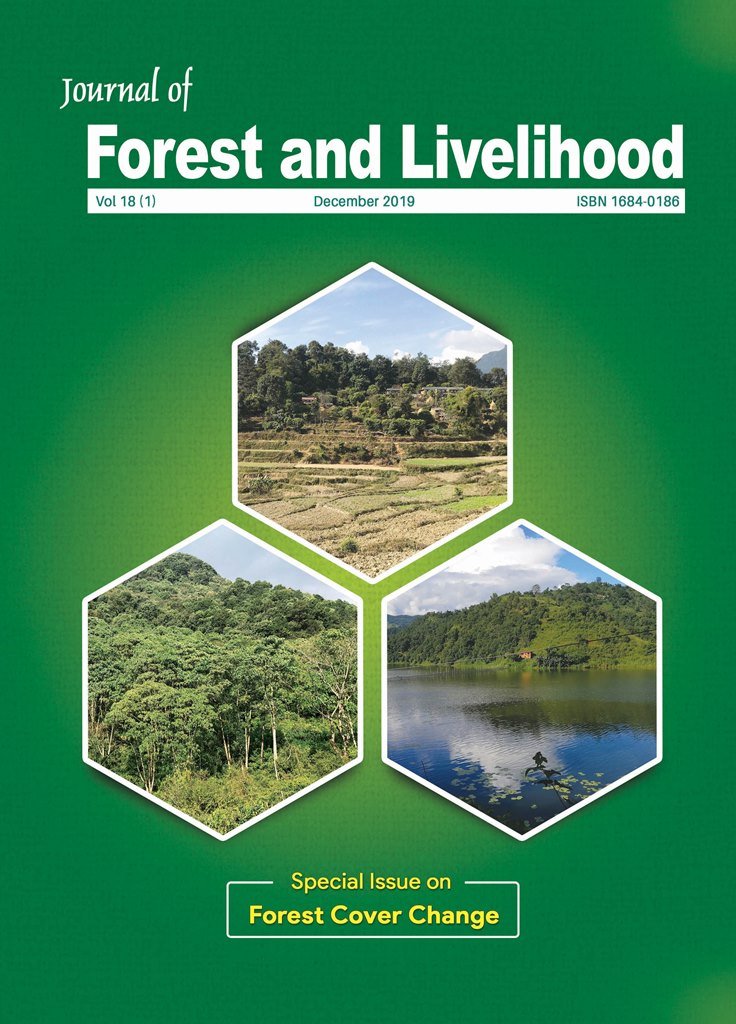Inventory Results of 101 Natural Forests in the Middle Hills of Nepal over Two Decades
DOI:
https://doi.org/10.3126/jfl.v18i1.59608Keywords:
Forest Inventory, increases in the number of stands, less grazing, the Middle HillsAbstract
Repeated forest-resource inventories provide indispensable information to evaluate, for example, the mean growth rate of stands and changes in tree-species composition in an area.This paper presents a summary of such longitudinal forest inventory data in the Middle Hills of Nepal, where deforestation has been an issue. Our first inventory was implemented between 1997 and 1999 and measured 3839 plots of 100 square meters (m 2 ). Our second inventory was conducted between 2014 and 2016 and measured 3765 plots of 100 m 2 . We found that over these two decades, the number of trees per hectare (ha -1) significantly improved. The number of stands ha -1 with diameter at breast height (DBH) of 10 centimeters (cm) and above went from 361.2 in the first inventory to 466.2 in the second inventory. We also found that not only the number of stands but also the quality of stands significantly improved. The number of stands with DBH of 30 cm and above ha-1 increased from 72.9 to 99.6. The mean alpha diversity, the number of trees species in a plot, rose to 2.1 from 1.6 in the initial inventory. In sum,“green has made a bold comeback in the Middle Hills”. Our indices evaluating the intensities of human activities on the plots suggest that these improvements in forest-resource conditions may be due to the decreased use of forests in the Middle Hills over these two decades.
Downloads
Downloads
Published
How to Cite
Issue
Section
License

This work is licensed under a Creative Commons Attribution-NonCommercial 4.0 International License.
CC-BY-NC: This license allows reusers to distribute, remix, adapt, and build upon the material in any medium or format for noncommercial purposes only, and only so long as attribution is given to the creator.





